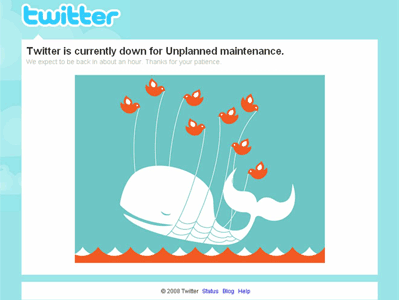Web Hype
Memes Will Be Memes
In this here book, Richard Dawkins coined the term meme.
I heard he doesn’t believe in gawd or something. I dunno,
Superiority theory
The superiority theory of humor traces back to Plato and Aristotle, and Thomas Hobbes’ Leviathan. This theory explains that a person laughs about misfortunes of others, because these misfortunes assert the person’s superiority on the background of shortcomings of others.
For Aristotle, we laugh at inferior or ugly individuals, because we feel a joy at being superior to them. Socrates was reported by Plato as saying that the ridiculous was characterized by a display of self-ignorance.
Incongruity
The incongruity theory states that humor is perceived at the moment of realization of incongruity between a concept involved in a certain situation and the real objects thought to be in some relation to the concept.
Since the main point of the theory is not the incongruity per se, but its realization and resolution (i.e., putting the objects in question into the real relation), it is often called the incongruity-resolution theory.
Francis Hutcheson expressed in Thoughts on Laughter (1725) what became a key concept in the evolving theory of the comic: laughter as a response to the perception of incongruity. Arthur Schopenhauer wrote that the perceived incongruity is between a concept and the real object it represents. Hegel shared almost exactly the same view, but saw the concept as an “appearance” and believed that laughter then totally negates that appearance. For Sigmund Freud, laughter is an “economical phenomenon” whose function is to release “psychic energy” that had been wrongly mobilized by incorrect or false expectations.
Ontic-Epistemic Theory of Humor
The Ontic-Epistemic Theory of Humor (OETC) proposed by P. Marteinson (2006) asserts that laughter is a reaction to a cognitive impasse, a momentary epistemological difficulty, in which the subject perceives that Social Being itself suddenly appears no longer to be real in any factual or normative sense. When this occurs material reality, which is always factually true, is the only percept remaining in the mind at such a moment of comic perception. This theory posits, as in Bergson, that human beings accept as real both normative immaterial percepts, such as social identity, and noological factual percepts, but also that the individual subject normally blends the two together in perception in order to live by the assumption they are equally real. The comic results from the perception that they are not. This same result arises in a number of paradigmatic cases: factual reality can be seen to conflict with and disprove social reality, which Marteinson calls Deculturation; alternatively, social reality can appear to contradict other elements of social reality, which he calls Relativisation. Laughter, according to Marteinson, serves to reset and re-boot the faculty of social perception, which has been rendered non-functional by the comic situation: it anaesthetises the mind with its euphoria, and permits the forgetting of the comic stimulus, as well as the well-known function of communicating the humorous reaction to other members of society.
Sexual Selection
Evolutionary psychologist, Geoffrey Miller contends that, from an evolutionary perspective, humor would have had no survival value to early humans living in the savannas of Africa. He proposes, that cultural aspects like humor, evolved by sexual selection. He argues that humor emerged as an indicator of other traits that were of survival value, such as human intelligence.
Misattribution Theory
Misattribution is one theory of humor that describes an audience’s inability to identify exactly why they find a joke to be funny. The formal theory is attributed to Zillmann & Bryant (1980) in their article, “Misattribution Theory of Tendentious Humor,” published in Journal of Experimental Social Psychology. They derived the critical concepts of the theory from Sigmund Freud’s Wit and Its Relation to the Unconscious, originally published in 1905. Freud declared people incapable of knowing exactly what it is they find amusing due to the complex nature of their conscious and subconscious minds. Jokes are crafted by comedians who have experience with causing laughter but who may themselves be blind to the actual cause of humor.
Benign Violation Theory
The benign violation theory (BVT), developed by researchers A. Peter McGraw and Caleb Warren, attempts to inform a debate that goes back to Plato about what makes things humorous. The BVT integrates seemingly disparate theories of humor to predict that humor occurs when three conditions are satisfied: 1) something threatens one’s sense of how the world “ought to be,” 2) the threatening situation seems benign, and 3) a person sees both interpretations at the same time.
From an evolutionary perspective, humorous violations likely originated as apparent physical threats, like those present in play fighting and tickling. As humans evolved, the situations that elicit humor likely expanded from physical threats to other violations, including violations of personal dignity (e.g., slapstick, teasing), linguistic norms (e.g., puns, malapropisms), social norms (e.g., strange behaviors, risqué jokes), and even moral norms (e.g., disrespectful behaviors). The BVT suggests that anything that threatens one’s sense of how the world “ought to be” will be humorous, so long as the threatening situation also seems benign.
There is also more than one way a violation can seem benign. McGraw and Warren tested three contexts in the domain of moral violations. A violation can seem benign if one norm suggests something is wrong but another salient norm suggests it is acceptable. A violation can also seem benign when one is psychologically distant from the violation or is only weakly committed to the violated norm.
For example, McGraw and Warren find that most consumers were disgusted when they read about a church raffling off a Hummer SUV to recruit new members. However, many consumers were simultaneously amused. Consistent with the BVT, people who attended church were less likely to be amused than people who did not. Churchgoers are more committed to the belief that churches are sacred and, consequently, were less likely to consider the church’s behavior benign.
General Theory of Verbal Humor
The General Theory of Verbal Humor (GTVH) proposed by Victor Raskin and Salvatore Attardo in 1991 (an extension of the semantic script theory of humour, SSTH which Raskin proposed in 1985) identifies a semantic model capable of expressing incongruities between semantic scripts in verbal humor; this has been seen as an important recent development in the theory of laughter.
Humor as defense mechanism
According to George Eman Vaillant’s (1977) categorization, humor is level IV defense mechanism: overt expression of ideas and feelings (especially those that are unpleasant to focus on or too terrible to talk about) that gives pleasure to others. Humor, which explores the absurdity inherent in any event, enables someone to “call a spade a spade”, while “wit” is a form of displacement (level 3). Wit refers to the serious or distressing in a humorous way, rather than disarming it; the thoughts remain distressing, but they are “skirted round” by witticism.
Blockquotes from “Theories of humor” on Wikipedia
Tags: the meme as a deconstructive device, the meme as a reflection of corporate attitudes, the meme as a way to truth or something, the meme as its relation to the unconscious, the meme as literature, the meme as pancakes for your brain, the meme as richard dawkins, the meme as what















nice work, reynard, this is a good post
nice work, reynard, this is a good post
http://27.media.tumblr.com/tumblr_l57d8po2IS1qz51hfo1_400.gif
Reynard Seifert is a spade.
http://27.media.tumblr.com/tumblr_l57d8po2IS1qz51hfo1_400.gif
Reynard Seifert is a spade.
dump.fm
I like this a lot.
dump.fm
I like this a lot.
Don’t listen to this Radiolab podcast unless you want laughter ruined for you:
http://www.wnyc.org/shows/radiolab/episodes/2008/02/22
But it is worth it, nonetheless.
Take that, Bernanke.
Don’t listen to this Radiolab podcast unless you want laughter ruined for you:
http://www.wnyc.org/shows/radiolab/episodes/2008/02/22
But it is worth it, nonetheless.
Take that, Bernanke.
Maybe a few months too soon for the 9/11 graphic. That’s still some serious shit to a lot of people.
Maybe a few months too soon for the 9/11 graphic. That’s still some serious shit to a lot of people.
oh man, you’re right, my bad. i should have posted that shit on 9/11
oh man, you’re right, my bad. i should have posted that shit on 9/11